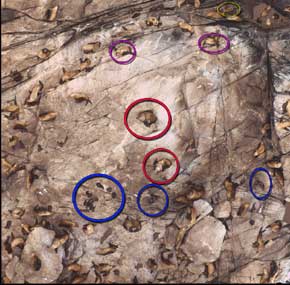 November 01, 2005
Scientists separate Steller sea lions into two populations at Longitude 144° west, the western and eastern populations. The eastern population, which stretches from Southeast Alaska through California, has increased by 2 percent per year over the last decade for adults and juveniles and 3 percent per year for pups. The western population inhabits the Gulf of Alaska, the Aleutian Islands and westward, and declined over 80% between the 1970s and 2000. This year's pup count for the western population shows that Gulf of Alaska pup counts have largely been stable since 2000. The largest regional decline in pup counts occurred in the western Aleutian Islands, while smaller declines were observed in the central Gulf of Alaska and central Aleutian Islands. The largest increase in the western stock occurred in the eastern Aleutian Islands, with smaller increases in the western and eastern Gulf of Alaska. Pup counts in southeast Alaska, part of the eastern population, also continued to increase. "The recent increasing trends in [western stock] pup counts, while encouraging, are less than those observed in non-pup counts from 2000 to 2004. More research is necessary to determine if the slower rate of increase is due to declines in their ability to produce offspring or whether there is a greater proportion of juveniles in the Steller sea lion population," said Lowell Fritz, fishery research biologist. Steller sea lions do not bear young until they are four or more years old, so increasing numbers of juveniles would not result in more pups until the juveniles reach breeding age. The summer 2005 Steller sea lion pup production count included rookeries from Dixon Entrance to Attu Island. Aerial photography allowed the biologists to assess Alaska's rookeries in one summer instead of several research seasons. This is the first single season Alaska-wide Steller sea lion pup survey. "Aerial photography allows us to survey most of Alaska's Steller sea lion rookeries in less than a month, and it may decrease the disturbance on rookeries", said Fritz.
On the Web:
Publish A Letter on SitNews Read Letters/Opinions Submit A Letter to the Editor
|
||
